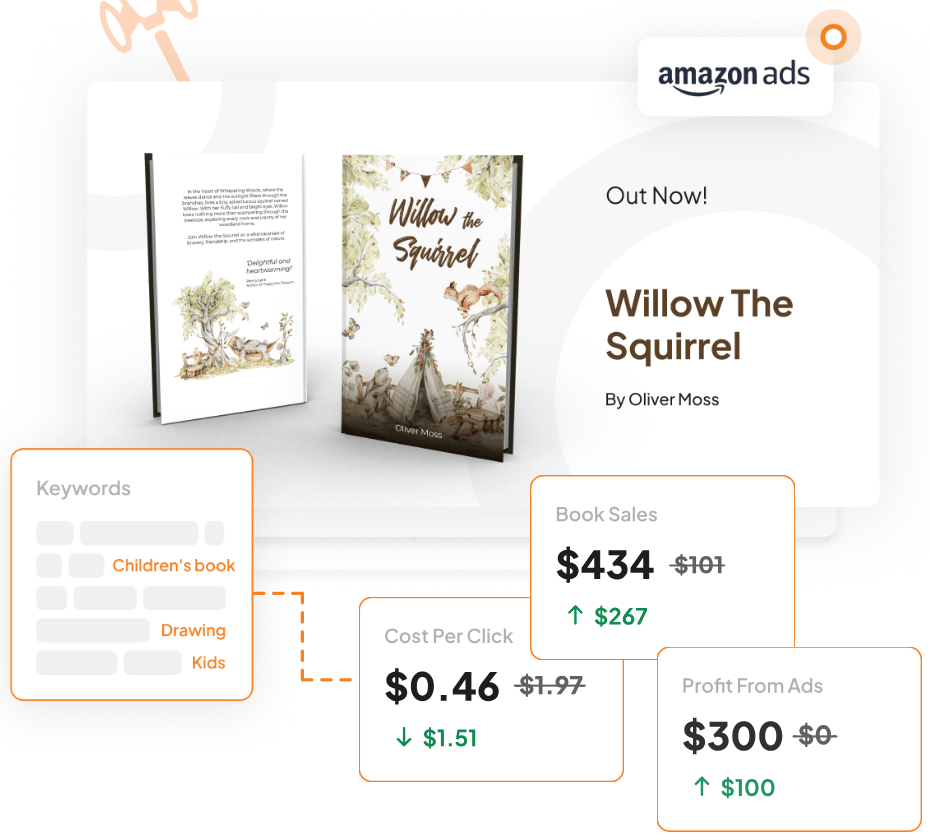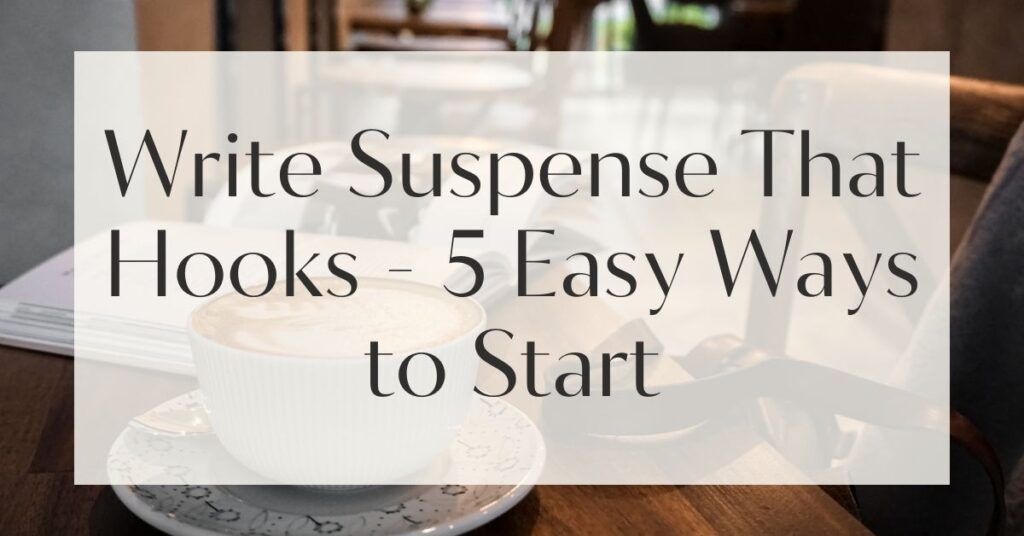Imagine you’re sitting in a dimly lit room, the air thick with anticipation. The pages of a book flutter under your fingertips, each turn revealing another layer of mystery. Have you ever wondered what makes a story so gripping that it refuses to let go? The secret lies in writing suspense.
Whether you’re crafting a thriller or weaving tension into a romance, mastering the art of suspense can elevate your storytelling to new heights. In this blog post, we’ll explore five straightforward techniques to ensure your narrative hooks readers from the very first line and keeps them on the edge of their seats.
Understanding Writing Suspense
The concept of writing suspense is akin to a masterful game of chess, where each move is calculated to build anticipation and intrigue.
It’s not just about what happens next, but when it happens and how it unfolds. Suspense is the lifeblood of storytelling, engaging readers and compelling them to keep turning the pages.
Feeling lost with your debut novel?
Fiverr Pro connects you with expert editors, designers, and marketers – everything you need to get your book ready for success!

What is Writing Suspense?
At its core, suspense is the tension that arises from uncertainty and anticipation. It’s the feeling that something significant is about to occur, yet the outcome remains just out of reach.
By skillfully manipulating information, pacing, and character actions, writers can create a narrative that is both immersive and thrilling. Suspense keeps readers hooked, eager to discover the resolution of the conflicts and mysteries presented.
The Importance of Suspense in Storytelling
Suspense is crucial in storytelling because it maintains reader engagement. It transforms a simple tale into a captivating journey filled with twists and turns.
By weaving suspense into your narrative, you invite readers to invest emotionally in the characters and their fates. This emotional investment is what drives them to care about the story’s outcome and makes the experience memorable.

Crafting Captivating Beginnings
The beginning of your story is your first opportunity to captivate your audience. A powerful opening sets the tone for the rest of the narrative and establishes the stakes that will keep readers invested.
Utilizing Story Hooks to Engage Readers
Story hooks are the bait that lures readers into your world. They can be a provocative question, an unexpected event, or a compelling character introduction.
For example, starting with a character in peril or a mysterious occurrence immediately draws readers in. Consider how a line like “The phone rang at midnight, but no one was there to answer” piques curiosity and sets a suspenseful tone.
Experiment with different types of hooks to see what resonates with your story’s theme. A hook should not only grab attention but also align with the narrative’s direction, hinting at the story’s deeper conflicts and themes.
Creating Tension with Opening Lines
The opening line of your story is your chance to make a lasting impression. A well-crafted sentence can set the stage for the suspense that follows.
Use vivid imagery, strong verbs, and intriguing scenarios to create an immediate sense of tension. For instance, “The storm raged outside as she realized the door was unlocked” creates an atmosphere of unease and anticipation.
To heighten suspense, start with an action or dialogue that hints at conflict. This approach immerses readers in the story and leaves them wanting to know more about the characters and their situation.
Five Techniques to Hook Your Readers
Now that we’ve laid the groundwork for understanding suspense, let’s delve into five practical techniques that will ensure your story hooks readers from the start.
1. Start with a Gripping Scene
Launching your story with a scene full of action or emotion can immediately engage readers. A gripping scene doesn’t necessarily mean explosive action; it can be a quiet moment charged with emotional intensity or a pivotal decision.
For instance, a character confronting a personal dilemma in the middle of a bustling city street can be just as compelling as a high-stakes chase.
Consider the elements of the scene that create suspense. Is it the setting, the stakes, or the character’s internal conflict? By focusing on these elements, you can craft a scene that captures attention and sets the tone for the narrative.

2. Build Anticipation with Questions
Questions are powerful tools in creating suspense. They engage readers’ curiosity and drive them to seek answers.
Introduce questions early in your narrative, such as, “Who is the stranger watching from the shadows?” or “What secret is the protagonist hiding?” These questions should be woven into the plot, providing a thread of mystery that runs throughout the story.
Use questions strategically to guide the reader’s focus. Ensure that each question adds depth to the plot and character development, leading to satisfying revelations as the story unfolds.
3. Use Vivid Imagery to Evoke Emotion
Imagery is a powerful tool for creating suspense, as it immerses readers in the sensory details of the scene. Describe the setting in a way that evokes emotion and heightens tension.
For example, “The moon cast eerie shadows across the deserted alley, where the sound of footsteps echoed ominously” creates a vivid picture that enhances the suspenseful atmosphere.
By appealing to the senses, you can make readers feel the tension alongside the characters, drawing them deeper into the narrative.
No marketing platform? No social following? No problem!
Publisher Rocket helps you market your debut novel like a pro.
It’s a gamechanger for debut authors – try it today!


4. Introduce Conflict Early
Conflict is the engine that drives suspense. Introducing conflict early in your story establishes the stakes and propels the narrative forward. Whether it’s an external threat or an internal struggle, conflict keeps readers engaged as they root for the characters to overcome obstacles.
Ensure that the conflict is clear and compelling, with consequences that matter to the characters and the plot. This will maintain reader interest and provide a foundation for building suspense throughout the story.
5. Employ Cliffhangers for Continued Interest
Cliffhangers are classic suspense techniques that leave readers hanging at the end of a chapter or scene, eager to find out what happens next.
A well-placed cliffhanger can create a sense of urgency and compel readers to keep turning the pages. For instance, ending a chapter with a character in peril or a shocking revelation can create a powerful incentive for readers to continue.
Balance the use of cliffhangers with moments of resolution to avoid frustrating readers. Each cliffhanger should serve the story, advancing the plot and deepening character arcs.

Enhancing Suspense Throughout Your Narrative
Once you’ve hooked your readers with a captivating beginning, maintaining suspense is key to keeping them engaged. This involves careful attention to pacing, foreshadowing, and character development.
Pacing: The Rhythm of Suspense
Pacing is the rhythm of your narrative, dictating when to speed up or slow down the action. In suspense writing, pacing is crucial for building tension and releasing it at the right moments.
Alternate between fast-paced scenes that heighten excitement and slower moments that allow for character reflection and development.
| Scene Type | Description |
|---|---|
| Fast-Paced | Action-packed, high stakes, and quick transitions to keep readers on edge. |
| Slow-Paced | Character-driven, reflective, allowing for emotional depth and tension buildup. |
Foreshadowing: Hinting at Future Events
Foreshadowing is a technique that subtly hints at future events, creating anticipation and suspense.
It involves planting clues or symbols early in the narrative that pay off later. For example, a character’s seemingly innocuous fear of heights might foreshadow a climactic scene involving a precarious situation.
Effective foreshadowing enhances the story’s coherence and provides a satisfying payoff for readers who pick up on the clues.
Google Docs is for notes. Scrivener is for novels. Upgrade your writing game and try it for free today!

Red Herrings: Keeping Readers Guessing
Red herrings are false leads or distractions that keep readers guessing and add layers of complexity to the plot.
By misleading readers, red herrings maintain suspense and make the eventual resolution more surprising and satisfying. They are especially effective in mystery and thriller genres, where the truth is often obscured by deception.
Use red herrings judiciously to avoid confusing readers. Each should serve the story’s overall arc, adding intrigue without detracting from the main plot.
Character Development: Creating Relatable Stakes
Well-developed characters are essential for creating suspense because they provide emotional stakes that resonate with readers.
When readers care about the characters, they become invested in their journeys and the challenges they face. Develop characters with depth, flaws, and relatable motivations to enhance the emotional impact of the suspense.
Use character arcs to mirror the suspenseful elements of your plot. As characters grow and change, their personal stakes should align with the story’s overarching tension.

Final Thoughts on Writing Suspense
Writing suspense is an art that requires a delicate balance of tension, mystery, and emotion. By employing these techniques, you can craft a narrative that captivates readers from the first page to the last.
Encouragement to Experiment with Techniques
Don’t be afraid to experiment with different suspense techniques to find what works best for your story.
Each narrative is unique, and the most effective suspense often arises from creative and unexpected approaches. By trying new methods, you can discover fresh ways to engage and thrill your audience.
Inviting Reader Engagement through Suspense
Ultimately, the goal of writing suspense is to create a connection with your readers. By inviting them into your story’s world and keeping them engaged with compelling characters and plot twists, you ensure that they remain invested in the outcome.
Encourage readers to reflect on the suspenseful elements and share their interpretations, fostering a sense of community and interaction.








